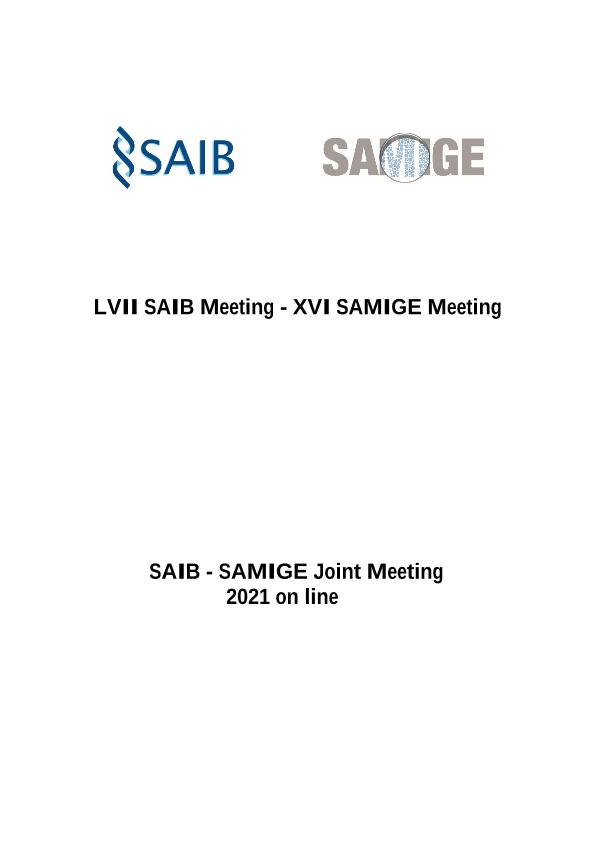Evento
Deciphering the light signal transduction mechanism in Staphylococcus aureus
Tipo del evento:
Encuentro
Nombre del evento:
LVII SAIB Meeting; XVI SAMIGE Meeting
Fecha del evento:
03/11/2021
Institución Organizadora:
Sociedad Argentina De Investigación Bioquímica Y Biología Molecular;
Sociedad Argentina de Microbiología General;
Título de la revista:
Biocell
Editorial:
Tech Science Press
ISSN:
0327-9545
Idioma:
Inglés
Clasificación temática:
Resumen
Staphylococcus aureus, Pseudomonas aeruginosa, and Acinetobacter baumannii have been recognized by the WHO and the CDC as critical human pathogens. These microorganisms belong to the ESKAPE group, so named since they are capable of "escaping" antibiotic treatments. The infections caused by these pathogens result in a dramatic increase in the costs of medical care. Previous results from our laboratory have shown that these microorganisms can sense and respond to light. In S. aureus, light has been shown to modulate important pathogenicity determinants such as alpha toxin-dependent hemolysis, as well as virulence in an epithelial infection model, which could have implications in human infections. Light also regulates persistence, metabolism, and the ability to kill competitors such as C. albicans, in this microorganism. To our knowledge, the ability of S. aureus to sense and respond to light constitutes a newly described physiological trait. These pathogens could sense light to synchronize their behavior with the circadian rhythm of their hosts, likely as a strategy to optimize infection development. Identification of the photoreceptors involved in light sensing in S. aureus would provide important insights into the light signal transduction cascade. Despite no traditional photoreceptors were found encoded in its genome, we identified the presence of three putative proteins containing GAF domains. GAF domains have been shown to be part of phytochromes and cyanobacteriochromes along with other domains such as PHY and PAS. While in two of them the GAF domain encompasses the full-length protein sequence, suggesting a new photoreceptor architecture, the last one harbors a GAF N-terminal domain associated with a C-terminal histidine kinase. The genomic environment of each putative photoreceptor was determined, and genes such as LuxR, involved in a quorum-sensing regulation; and DegU, identified as a response regulator of bacterial motility, virulence and biofilm formation, were found in their close proximity. Recent results from our group show that motility in S. aureus is not only modulated by blue light, but also by red and green lights. This is compatible with multiple GAF photoreceptors as they exist in two thermally stable states interconvertible by light, absorbing in different regions of the spectrum. Moreover, the presence of three cysteine residues were observed, residue shown to be essential for binding of the bilin chromophore. In this sense, it is interesting to note that S. aureus produces Staphylobilin as a product of heme metabolism. In addition, we amplified the DNA fragments encoding these putative photoreceptors from S. aureus USA300 strain, and subcloned them into the expression vector pET-TEV, to corroborate that they are active photoreceptors upon light absorption. Finally, proteomic results are discussed which suggest new pathways modulated by light in S. aureus such as cell wall synthesis and recycling.
Palabras clave:
LIGHT REGULATION
,
PHOTORECEPTORS
,
STAPHYLOCOCCUS AUREUS
Archivos asociados
Licencia
Identificadores
Colecciones
Eventos(CEFOBI)
Eventos de CENTRO DE EST.FOTOSINTETICOS Y BIOQUIMICOS (I)
Eventos de CENTRO DE EST.FOTOSINTETICOS Y BIOQUIMICOS (I)
Citación
Deciphering the light signal transduction mechanism in Staphylococcus aureus; LVII SAIB Meeting; XVI SAMIGE Meeting; Argentina; 2021; 122-122
Compartir




